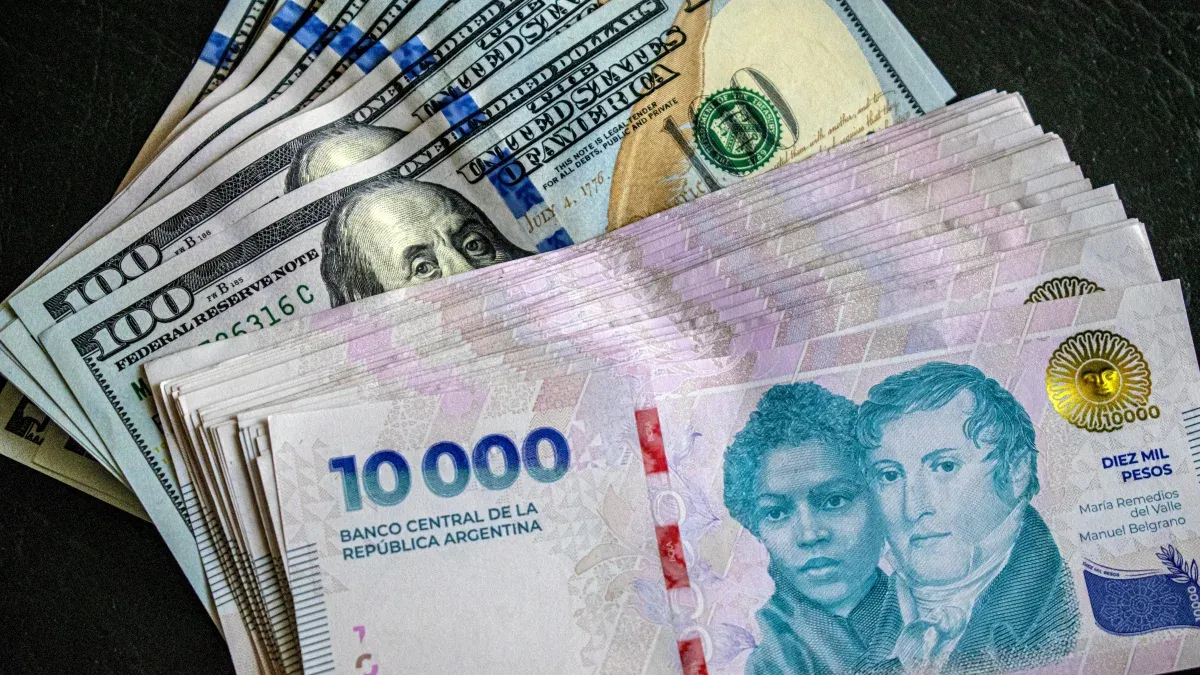For decades, Argentina repeats a pattern that condemns it to recurring economic and social crises, marked by the currency scarcitythe Capital leak and the exchange rate collapse. History has taught us that When reservations are exhausted and the economy is sustained with a fragile financial balance, the outcome is usually traumatic.
Today the alarm signals are on: the current account deficit is aggravated, the Central Bank (BCRA) is found with negative net reserves, and the overvaluation of the country’s competitiveness. Meanwhile, tourism abroad and import growth drain the few dollars available, dangerously approaching a predictable outcome.
The ghost of the exchange crisis is no longer only a theoretical possibility, but an increasingly sensitive scenario. With debt maturities and without access to voluntary credit markets, Argentina faces one of its most critical economic crossroads of the last 5 years. Is it possible to avoid debacle? Or are we destined to repeat history?
100 dollars
Dollar, in the eye of the storm in Argentina.
From recent empirical data, exchange overvaluation, commercial balance and restrictions on access to external financing are examined. These findings are contrasted with the theoretical frameworks raised by Diamand (1985), Wainer (2021), Basualdo (2019) and Olmos (2006), among others, to understand the structural vulnerability of the Argentine economy.
Introduction
The recurring crisis of currency scarcity in Argentina has been the subject of numerous academic studies. As Marcelo Diamand points out in “The Argentine pendulum”, the national economy ranges from exchange cycles and steep devaluations, generating macroeconomic instability.
Empirical evidence of the exchange crisis
For eight consecutive months, Argentina records a persistent deficit in the current account, aggravated by the appreciation of the real exchange rate (TCR) and the liberalization of imports. In January 2025, the current account deficit climbed at $ 1,660 million, driven by a strong increase in tourism spending. Currently, the number of Argentine tourists traveling abroad has reached record levels comparable to the beginning of 2018, although the dollar salary today is 19% lower in real terms.
The gross reserves of the Central Bank (BCRA) have descended to (-U $ 5,900) million from the peak that exceeds the USD 33,000. However, net reserves, considering the maturities of the Bopreal (and the emergency department has already begun), excluding the treasure deposits, the negative balance reaches the (-u $ 8.2 billion). The intervention of the BCRA in the market in cash with liquidation (CCL) has contributed decisively.
Overvaluation of the real exchange rate and deterioration of the commercial balance
The actual multilateral exchange rate (TCRM) is between 14 and 16% below its level of the beginning of 2018 (tragic year), when it began with a very low price of the dollar, coincidentally the economy was commanded by the same actors, with the same objectives: to grant all the dollars that are requested at highly convenient prices to those who are exit of the “Carry Trade”. This situation of growing appreciation of the national currency has eroded external competitiveness and has led to a fall in the commercial surplus, which in January 2025 was reduced to only US $ 145 million. Without the positive impact of the energy sector traction by the energy advances of the previous government, the result would have been a deficit of around US $ 600 million. Praying that peace in Europe would enable Russia to return to provide the EU and the decision to “drill everything” by Donald Trump, do not impact us for 2025. Additionally, the commercial deficit with Brazil deepened in February around (-U $ 400 million), with an interannual growth of imports of 56%. For the whole year (Ceteris Paribus), it is estimated that the bilateral deficit with Brazil could reach $ 3.8 billion, neutralizing the currencies obtained by the energy surplus.
External restrictions and debt crisis
Even if the 78 billion debt in pesos stay in the system making “Roll Over”, the reserves are scarce, without access to the voluntary debt market, Argentina faces debt maturities for US $ 22,800 million in the next 12 months, including US $ 12,250 million in exchange and Bopreal bonds. In this context, the BCRA has resorted to the sale of dollars in the MEP and CCL markets to sustain the exchange stability increasingly to the record last Friday and something more this Monday. The reality is that the significant accumulation of reserves necessary to achieve the IMF goals has not been achieved. That is why FMI-who officials from the moment of eventual approval of the DNU would take the final decision almost a month-, it has been marching “at the pace of man”, with Kristalina Georgieva consulting trade unionists and looking with the corner of the eye the tragedy of Wednesday.
In spite of everything, an agreement with the IMF could represent insufficient relief. Because in jargon we know that lending and taking scarcely is always more risky than “not lending or taking.” The reason is simple: “If you fall short” the aid, the current debt can be staggered added to the one that is yet to come. Real and forceful support that prevents the country with the country to keep climbing would require the total refinancing of the debt with the body and the disbursement of fresh dollars to cancel the treasury debt and abound fire power. The ideal number would be between USD 25,000 and US $ 30,000 million-a period that seems highly unlikely. ”
Conclusions
The Argentine macroeconomic situation in 2025 reflects a new manifestation of the “Argentine pendulum” described by Diamand. The overvaluation of the weight, the current account deficit and the restrictions on access to external financing generate an extreme vulnerability scenario. As Basualdo and Olmos have documented, the structural dependence of the Argentine economy of external indebtedness and capital escape limits the country’s ability to sustain exchange stability without resorting to new severe adjustments that society would seem to be able to support.
If there are no generous disbursements that grant “amplitude of availability” so that the detached minister will have liberally, it is likely that Argentina in front of an exchange and financial crisis before the October 2025 elections, with a significant social impact.
We are at a limit moment. The signs of social and financial exhaustion are unmistakable: marches and repression of the protest, negative net reserves, relationship of extraordinary debt close to 95% of GDP and an economy that operates with structural shortage of dollars, in the midst of a level of activity that does not start starting. The estimated growth figures that transcend from the agencies, leave the data provided by the government itself, so they look exaggeratedly optimistic.
As in the darkest episodes of our economic history, the margin of maneuver is reduced day by day, while the Argentine pendulum ranges from a new phase of crisis.
The urgency of the minister makes a lot of sense within his logic. If access to financing is not quickly restored and there is no rebound in the accumulation of currencies, exchange stability will be an ephemeral illusion. In a scenario where expectations play a decisive role, distrust could trigger a devastating run, accelerating a devaluation that drags into purchasing power and details a social crisis of unknown proportions.
The next 6 to 8 weeks will be decisive. Without precise support, the country could face the “manada effect” that would condition not only the present, but also the future of another entire generation, although we recognize that it is strongly committed right now. Argentina’s history has shown us that crises do not notifybut this time, by repetitive, the signals are too clear to ignore them. Time ends.
Director of Esperanza Foundation. Postgraduate professor at UBA and private universities. Master in International Economic Policy, Doctor of Political Science, author of six books.
Source: Ambito
David William is a talented author who has made a name for himself in the world of writing. He is a professional author who writes on a wide range of topics, from general interest to opinion news. David is currently working as a writer at 24 hours worlds where he brings his unique perspective and in-depth research to his articles, making them both informative and engaging.




